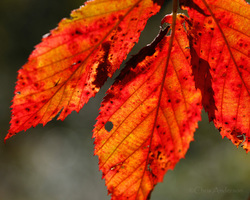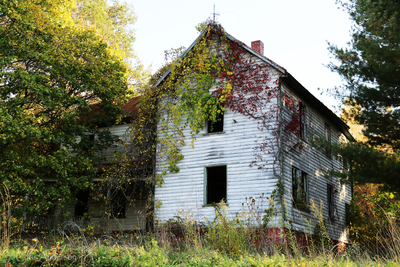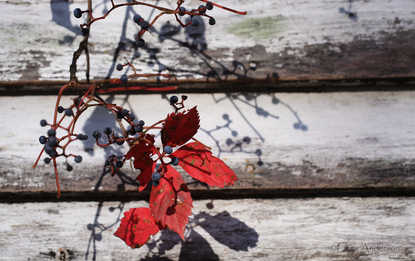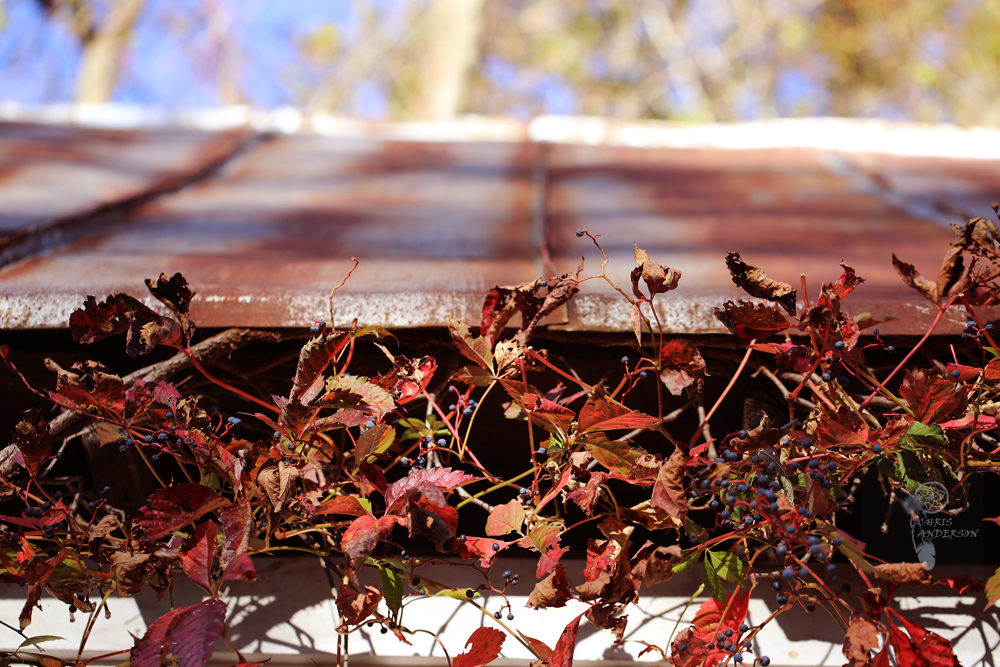 It seems like a late fall this year in Virginia with leaves turning color later than usual - not that most folks mind - businesses in the Piedmont and Shenandoah Valley welcome the visitors who come to admire the brilliant yellow oranges and reds. Those of us fortunate enough to live here can enjoy the mountains bathed in color and pick out favorite trees to watch as they turn different shades and drop their leaves to reveal their branching structures. One of our most colorful vines is the native Virginia Creeper (Parthenocissus quincifolia). It turns brilliant red and burgundy and adds splashes of color to tree trunks, sides of buildings and anything else it uses as support. It can be used in the landscape to stabilize soil on eroded banks or planted in shaded forests to add diversity and habitat. If used on a fence or rock wall, plan for the future - it can be pruned to keep it somewhat controlled but can also grow 50-60 feet. Birds appreciate its abundant foliage to build protected nests and the blue-black berries provide valuable sustenance in the fall to migratory species as well as our year-round avian friends (note to foragers: the berries are toxic to humans). According to the recently published Piedmont Native Plants - A Guide for Landscapes and Gardens*, Virginia Creeper is the host to 32 species of native caterpillars, including the Virginia Creeper Sphinx. Guide published by Repp Glaettli, www.albemarle.org/nativeplants  The red foliage in this photo (left) is Virginia Creeper and the yellow and green leaves belong to the invasive non-native Oriental Bittersweet.
0 Comments
Your comment will be posted after it is approved.
Leave a Reply. |
Have a blog or blog idea?
Let us know (click) Other Blogs
VA Native Plant Society - click Brenda Clement Jones - click John Muir Laws' Blog - click Megan's Nature Nook - click Categories
All
Archives
September 2023
Blog Administrator:
Kathleen A. VMN since 2018 |

